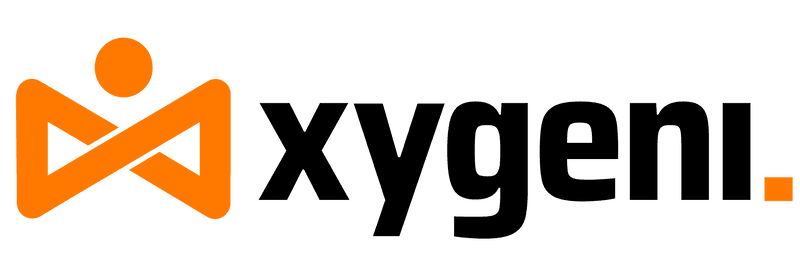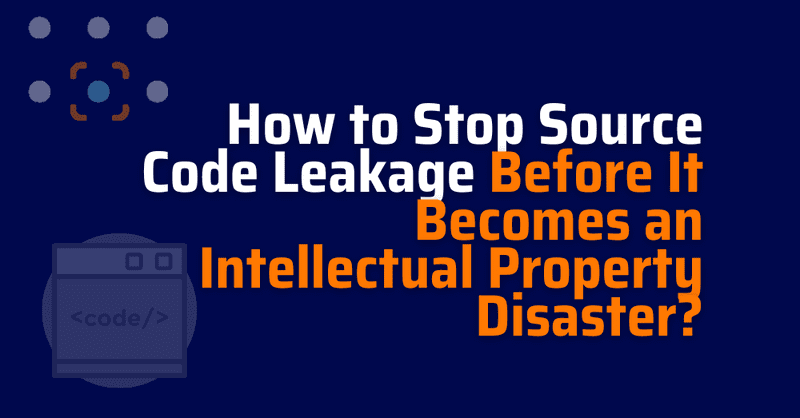Source Code Leakage Is a DevSecOps Priority
In modern DevOps workflows, source code leakage isn’t just a legal mishap; it’s an intellectual property protection failure. When critical code escapes into the wild, the consequences go beyond brand damage. Competitors get a shortcut to your most valuable algorithms, configuration secrets, or product logic. And the truth is, it’s happening more often than teams realize.
Intellectual property leakage is no longer just a compliance checkbox; it’s a fundamental security and business risk. In DevSecOps environments, every developer commit is a potential inflection point for exposure. If you think of source code as your product’s DNA, protecting it needs to be part of your deployment pipeline from the start.
The Real Cost of Source Code Leakage: When IP Becomes Public
Let’s skip the legal jargon. Here’s what happens when your source code leakage becomes someone else’s opportunity:
- A developer accidentally pushes proprietary pricing logic to a public repo. A competitor forks it within days.
- Sensitive endpoints become publicly indexed, exposing internal services or authentication flows.
- A unique recommendation engine, core to product differentiation, is replicated after being leaked.
These aren’t rare exceptions. They’re direct examples of intellectual property leakage that reduce product value, kill competitive edge, and cause long-term brand erosion.
DevOps Risk Zones: Where Source Code Leakage Starts
Intellectual property protection fails quietly, through everyday DevOps oversights:
- Unsecured CI/CD logs dumping .env variables with plaintext API keys
- Build artifacts pushed to S3 buckets with embedded OAuth tokens and hardcoded internal endpoints
- Misconfigured permissions on GitHub repositories grant public read access to sensitive branches like feature/payments-refactor
Real-World Impact Examples:
- Exposed Payment Gateway Functions: A developer commits payment_processor.py to a public repo. This file includes logic for discount calculation, fraud detection thresholds, and rate-limiting mechanisms. A competitor forks it, adjusts thresholds, and releases a clone product in weeks.
- Internal API Surface Exposure: Jenkins logs are found to contain internal routes like /admin/flush-cache and /user/session/override tied to elevated admin permissions. These logs, stored in a public bucket, are indexed by search engines.
- Leaked Algorithm Configurations: A staging Dockerfile includes machine learning model weights (model_v1.h5) and hyperparameters (batch_size=256, learning_rate=0.001) hardcoded in the container. Once pushed to Docker Hub, this critical model configuration becomes public, undermining months of tuning work.
These aren’t hypothetical vulnerabilities; they’re operational realities. Each one represents a loss of product intelligence and creates attack surfaces that would otherwise remain private.
Open Source vs Proprietary Code: Double Exposure, Double IP Risk
Open source isn’t the enemy, but unmanaged use of OSS can inadvertently lead to intellectual property leakage. The boundary between open and proprietary code can blur in modern development workflows, especially when internal teams wrap, extend, or modify OSS without proper isolation.
How OSS Misuse Leads to IP Exposure:
- Unscoped Internal Extensions: Developers build proprietary logic on top of OSS packages but fail to separate internal modules. When these packages are later published or reused, they may include internal classes, functions, or configuration files.
- Accidental Dependency Leakage: Internal services might rely on third-party packages that contain sensitive metadata (e.g., environment-specific config files, endpoint mappings, logging parameters), exposing architectural insights or usage patterns when published.
- Source Confusion: Without clear tracking, developers may unknowingly commit proprietary enhancements into forks or upstream repos, mixing IP-protected logic into publicly accessible codebases.
Mitigation Strategies:
- Software Bill of Materials (SBOM): Maintain an SBOM for every project to identify all open source dependencies, their provenance, and their risk profile.
- Internal vs External Diffing: Use automated tools to diff internal forks or components against their OSS origins, flagging any proprietary additions that should remain private.
- Tree-Shaking for IP Protection: Implement custom tree-shaking techniques to strip out non-essential or internal logic before publishing or packaging any component for external use.
By establishing strict boundaries and employing these safeguards, teams can benefit from OSS innovation without sacrificing intellectual property integrity.
Failed Defenses: Why Source Code Leakage Keeps Happening
Most teams believe their code is secure, but misconfigurations and bad habits make intellectual property protection fragile and inconsistent. Many leakage incidents come from simple oversights rather than sophisticated attacks.
Common Missteps That Lead to IP Exposure:
- .env Files with Staging Secrets: A developer adds .env.staging containing API tokens, database URLs, and third-party credentials. It’s not included in .gitignore, and a careless commit pushes it to the repo. A subsequent merge exposes it to all collaborators or even to public forks.
- Hardcoded Secrets in Dockerfiles: A Dockerfile includes a line like ENV JWT_SECRET=”supersecretkey” or COPY config/prod.env /app/, baking sensitive values directly into the image. Once the image is pushed to a registry or used in a shared pipeline, the secret is embedded and retrievable.
- Incomplete .gitignore Policies: A team forgets to update .gitignore to exclude .pem, .bak, or environment-specific config files. Developers assume these files are ignored, but local Git behavior varies, and they get committed.
- Poor Secrets Scanner Configuration: A secrets scanner is deployed, but excludes .log files or temporary directories where test runs often dump tokens. An attacker browsing build artifacts can retrieve valid tokens from these files.
These aren’t edge cases; they’re routine oversights that tooling alone can’t catch unless paired with strong enforcement and developer awareness. Without clear policies and disciplined hygiene, even the best security tools can’t prevent IP leakage at the source.
Preventing Source Code Leakage at the Developer Level
Most intellectual property leakage begins as a small, avoidable human error, a debug file pushed in a rush, a secret left in a temporary script, or a last-minute config tweak committed without review. These errors aren’t malicious; they’re a byproduct of developer speed under delivery pressure.
That’s why repo guardrails and pre-commit scanning are not just helpful, they’re essential. They provide automated, real-time protection right where risk starts: in the developer’s environment, before anything reaches version control or the CI pipeline.
Why They Matter:
- Immediate Feedback: Developers get instant alerts about sensitive content before it leaves their local machine.
- Consistent Enforcement: Policies apply the same rules to every commit and push, regardless of the individual or urgency.
- Risk Containment: Issues are caught early, reducing the chance of secrets or proprietary logic ever reaching a shared repo.
Example Workflow: Guardrails in Action
- Pre-commit Hook (Local):
- A developer runs git commit on a file that includes AWS_SECRET_ACCESS_KEY.
- A developer runs git commit on a file that includes AWS_SECRET_ACCESS_KEY.
A hook from gitleaks scans the diff, matches the key pattern, and blocks the commit with a message:
🔒 Potential secret detected: AWS_SECRET_ACCESS_KEY in config.py
Commit aborted. Please remove or mask the secret.
- Push Policy (Remote):
- If the commit is somehow forced or the hook is bypassed, a Git server-side hook revalidates the changes.
- It scans for forbidden patterns or file types (e.g., .env, .pem, .bak) and rejects the push with a detailed policy violation error.
- If the commit is somehow forced or the hook is bypassed, a Git server-side hook revalidates the changes.
- CI Policy Enforcement:
- As a final checkpoint, the CI pipeline includes a secrets scanner and a validation script.
- If anything leaks through, the build fails early, preventing artifact deployment.
- As a final checkpoint, the CI pipeline includes a secrets scanner and a validation script.
This multi-layered defense ensures that IP protection starts at the IDE and persists across all stages of the workflow. By automating enforcement without relying solely on developer vigilance, teams can reduce accidental leaks without slowing down development.
Hardening CI/CD for Intellectual Property Protection
Your CI/CD pipelines are the backbone of your software delivery process, but they can also become silent leak vectors if not properly secured. Without strict controls, even well-intentioned automation can expose sensitive assets.
Proactive Measures to Secure Your Pipelines:
- Validate Generated Artifacts: Implement automated checks to inspect build outputs (binaries, containers, packages) and ensure they don’t contain sensitive files, debug info, or internal-only logic. Use allowlists and custom validation scripts as part of the build process.
- Scrub Logs for Sensitive Data: Avoid logging raw secrets, tokens, or user data. Apply log sanitization filters that automatically redact sensitive strings like Bearer, Authorization, JWT, or file paths matching .env, .pem, .key. Ensure that debug logging is disabled in production jobs.
- Automate Secret and Token Rotation: Treat secrets as short-lived by default. Use the pipeline to rotate credentials (e.g., API keys, access tokens, service credentials) after every successful build or deployment. Integrate with secret managers (like Vault, AWS Secrets Manager) to fetch, inject, and expire secrets automatically.
- Enforce Least Privilege Access: Limit who and what can access pipeline artifacts, credentials, and deployment environments. Segment environments (staging, QA, production) with strict role-based access and avoid shared credentials.
- Disable Persisted State Sharing: Avoid reusing workspaces or sharing caches between sensitive jobs. Clean up temporary files, logs, and intermediate artifacts at the end of each pipeline stage.
- Monitor for Anomalies in CI Behavior: Set up alerting for unexpected changes in pipeline configurations, permissions, or build execution patterns.
If source code or secrets leak at the CI/CD level, the exposure is already widespread. By adopting proactive, layered defenses in your pipelines, you not only reduce leakage risk, you build resilience into the very fabric of your DevSecOps practice.
Xygeni’s Approach: Real-Time Source Code Leakage Prevention
The key to preventing intellectual property leakage is catching mistakes before they leave the developer’s hands, without slowing down the workflow. That’s where Xygeni fits in: as a seamless, real-time safety net.
What Xygeni Does:
- Automatic Blocking of Sensitive Files: Xygeni prevents commits or pushes that include high-risk file types like .env, .pem, .bak, .p12, or internal schema files. These checks are enforced at the source, directly in the developer workflow.
- Contextual Alerts: When a rule is triggered, Xygeni generates alerts enriched with metadata such as:
- The developer who committed
- The exact file and line involved
- The associated commit hash
- Timestamp and triggering policy
- The developer who committed
- These alerts can be routed to Slack, email, or pipeline logs, giving teams visibility without interrupting flow.
- Behavioral Auditing: All blocked attempts and rule violations are logged and tracked. This audit trail helps identify recurring patterns, train teams, and fine-tune policies. Over time, teams gain insights into which areas pose the highest leakage risk.
Designed to Support, Not Obstruct:
Unlike rigid gatekeepers, Xygeni is built to work with developers, not against them. Its lightweight agents and Git integrations operate silently in the background, enforcing policies without forcing manual reviews or delaying commits. Developers stay in control, and protected. When a violation is detected, they’re notified early and clearly, with enough detail to fix it before the code leaves their environment.
By acting as an invisible but reliable layer of defense, Xygeni helps reinforce secure coding habits while maintaining development speed. It turns IP protection into a continuous, developer-friendly process that scales with modern teams.
Action Plan: Strengthen Your IP Protection Across DevOps
To prevent source code leakage, embed intellectual property protection at every stage:
- Run local scans before every commit.
- Avoid hardcoded secrets, use vaults.
- Review OSS packages before use.
DevOps Checklist:
- Secure pipeline configs.
- Limit build output exposure.
- Automate secret rotation and artifact validation.
Promote a DevSecOps culture where protecting code is part of the team’s identity.
Intellectual Property Leakage is a DevOps Problem
Intellectual property leakage is not a theoretical risk. It’s an operational, reputational, and financial threat rooted in daily development workflows. Start by treating every line of source code as business-critical. Make intellectual property protection a continuous process, from developer IDEs to pipeline outputs. And remember: The best time to fix this was yesterday. The second-best time is now.

